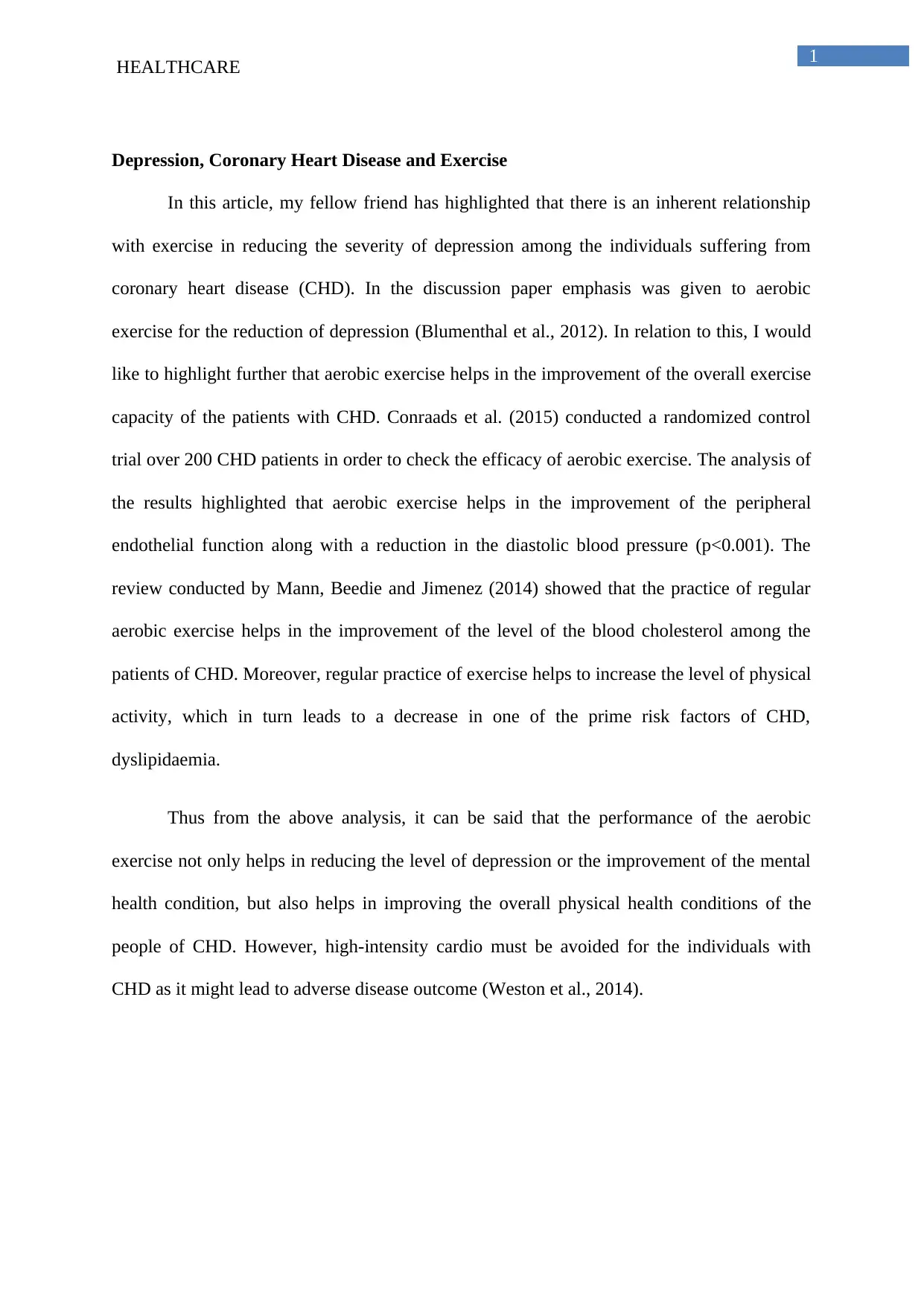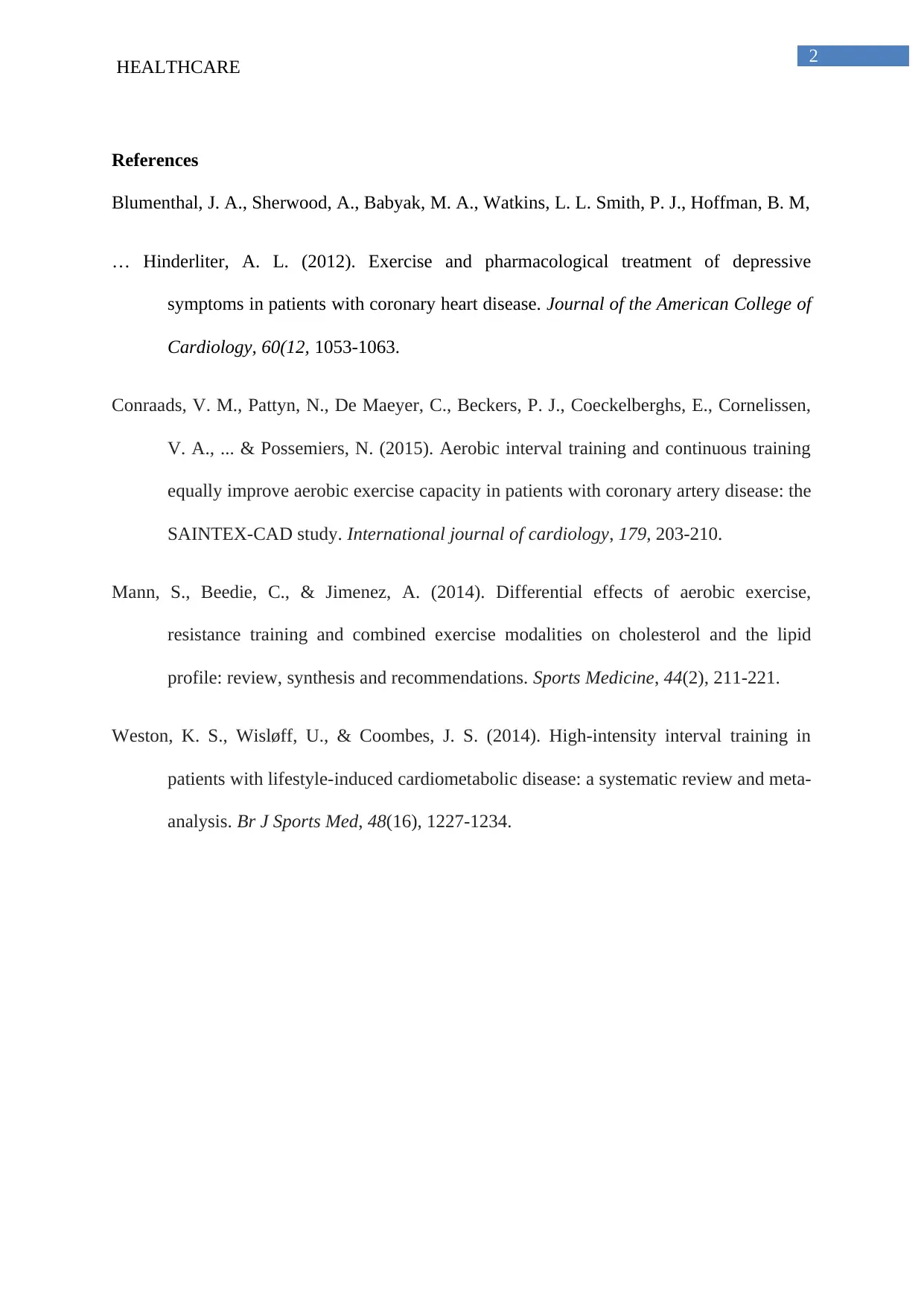Exercise as a Treatment for Depression in CHD Patients: A Report
VerifiedAdded on 2023/04/21
|3
|555
|262
Report
AI Summary
This report examines the relationship between exercise and depression, specifically focusing on patients with Coronary Heart Disease (CHD). It references Blumenthal et al.'s (2012) research, which highlights the effectiveness of aerobic exercise in reducing depressive symptoms in CHD patients. The report further discusses how aerobic exercise improves the overall exercise capacity of CHD patients, citing Conraads et al. (2015), who demonstrated improvements in peripheral endothelial function and diastolic blood pressure. It also references Mann, Beedie, and Jimenez (2014), emphasizing the positive impact of regular aerobic exercise on blood cholesterol levels. The report concludes that aerobic exercise not only improves mental health but also enhances the physical health of individuals with CHD, while cautioning against high-intensity cardio. The assignment brief mentions a research study with three categories: Exercise, Sertraline and Placebo, and the research results showed that the participants prescribed aerobic exercise achieved “significantly greater reductions in depressive symptoms associated with exercise” (p.1061) at a p-value of 0.607 compared to placebo at a p-value of 0.052 (Blumenthal et al., 2012). The research concludes that depression could be treated by exercise. In applying this week learning (Laureate, 2014a,b; 2017) to the exploration of data presented in Blumenthal et al., 2012, suggest the research demonstrates a significant association between exercise and depression. Chi-square test of association is used to test statistical significance in data that can be categorised using conventional nominal scales to examine the association between two variables (Curtis
1 out of 3








![[object Object]](/_next/static/media/star-bottom.7253800d.svg)